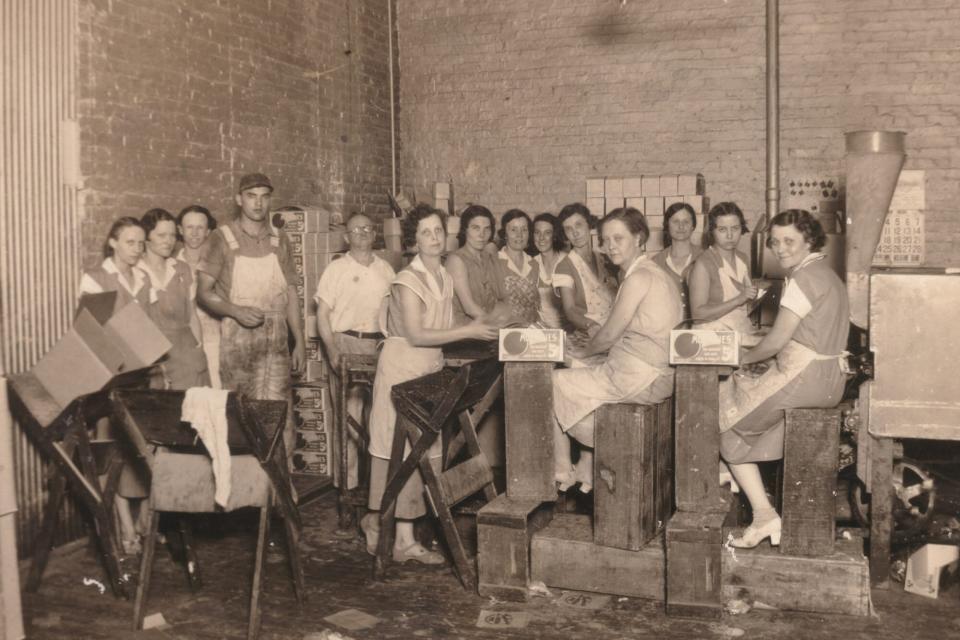From Miners to Mardi Gras, How the MoonPie Became a Beloved Southern Snack

Photography: Caitlin Bensel, Food styling: Torie Cox
In the South, it's well known that MoonPies were created at and are still made by the Chattanooga Bakery in Tennessee. If you're in Mobile, Ala., or any Mardi Gras party throughout the Deep South for that matter, you may associate the marshmallowy treat with the spring holiday. But the history of the MoonPie is much more storied.
Humble Beginnings
Chattanooga Bakery started as an offshoot of a flour mill the bakery owners had. They thought they should start a bakery to use up the 10 percent of flour leftover from products. It was a use-it-or-lose-it situation.
So that's what they did—but let's just say the bakery wasn't quite as successful as they hoped.
"They originally made all of these different items—wafers, crackers, vanilla cookies—under a brand called Lookout, a local residential and tourist mountain in Chattanooga," says Tory Johnston, vice president of sales and marketing, who has been with Chattanooga Bakery for 24 years.
As the story goes, in 1917, one of the sales managers was on a sales call at a general store in Kentucky's Appalachian region. It wasn't a very successful sales call; the owner told him to come back when he had something new to offer.
When he walked outside to leave, he stumbled on a few coal miners and asked them what they thought sounded good.
"Well, chocolate is pretty good. I like the cookies, one says," as Johnston recounts the story, "Whatever you do, make it big because once we are down in the mines, we are there all day."
Size-wise, they made a gesture to the rising moon and suggested they "make it as big as that," the view of the moon that day. As the tale continues, when the sales manager returned to the bakery, he saw some of the workers at the plant warming up marshmallow by the windows to dip their cookies.
"An a-ha moment to create a big round cookie with marshmallow sandwiched in between, and it looked like a pie," Johnston says. The MoonPie was born.

Courtesy of Chattanooga Bakery
Popular From the Get-Go
It wasn't long before the MoonPie became popular throughout the South. After all, it was considered a value for the size and cost. The original MoonPie was four inches in diameter (it's now 2 ¾ inches) and cost only a nickel.
Some called it the working man's lunch because it was big enough for a meal. It was certainly big enough to take down into the coal mines all day.
Chocolate was the original and only flavor until the 1970s, when the bakery added banana. In the 1960s, the treat became so much more popular than any other treat they made that the bakery decided to exclusively make MoonPies.
Mardi Gras Madness
How did the treat for coal miners go from lunch pails to Mardi Gras treasure? That tradition started in Mobile, home of Mardi Gras, when it was decided that Cracker Jack boxes, the item that used to be thrown during parades, were just too darn hard. So, MoonPies, a value at just a nickel back then, became the thing to throw.
"We now sell millions of them during Mardi Gras," says Johnston.
They are so well known in Mobile that a decade ago, the city dropped a gigantic MoonPie (instead of a crystal ball like New York City) to kick off the New Year.
Chattanooga Bakery also releases special limited-edition flavors during Mardi Gras, like coconut and salted caramel, and they sell others during the year, like pumpkin spice and lemon.
Today MoonPies, once a distinctly Southern treat, have made their way across the United States, so while the history is certainly tied to the South, they're now beloved across the country.
"In the last five to seven years, we've really seen an uptick," says Johnston. "It's a yummy product that definitely resonates in a hyper-inflation world."

